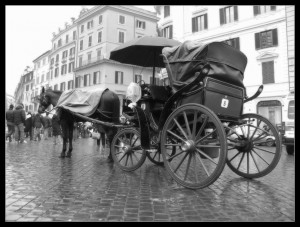 “All is true” wrote Balzac, in English, at the beginning of his 1835 novel le Pere Goriot. It is a warning that despite the dastardly characters and their actions the book is a realistic representation of Parisian life, not to be dismissed as dramatically enhanced in order to titillate or scandalize.
“All is true” wrote Balzac, in English, at the beginning of his 1835 novel le Pere Goriot. It is a warning that despite the dastardly characters and their actions the book is a realistic representation of Parisian life, not to be dismissed as dramatically enhanced in order to titillate or scandalize.
The plot somewhat replays Shakespeare’s King Lear during the Bourbon Restoration, with two faithless daughters and their elderly besotted father, a wealthy vermicelli manufacturer who ruins himself for the daughters’ furtherance. Eugene de Rastignac, an impoverished young law student swept up in the daughters’ social ambitions, resides at the father’s rooming house, watches the old man’s pitiful decline as his sacrifices push him to ever dingier rooms and more meager circumstances. This central character will later appear in other novels of La Comedie Humaine, a vast interconnected web of novels about French society.
Balzac’s commitment to realism did not win him many friends with the critics, who wanted more sympathetic characters to portray society’s imperfections in a better light. Polite circumlocution would have avoided the naming of names. Yet Goriot is one of the foundational novels of French Literature because in it we find human nature mirrored rather than excused.
 If, as Chekhov proposed, the purpose of art is not to solve problems but to formulate them correctly, Balzac focuses on the problem of human frailty and lays its weakness out for examination; when the daughters are too busy to send anything but their empty crest-emblazoned carriages to the old man’s funeral, Balzac pillories their outrageous callousness by simply comparing such gestures of consumerist finery alongside the pathetically impoverished circumstances of the burial.
If, as Chekhov proposed, the purpose of art is not to solve problems but to formulate them correctly, Balzac focuses on the problem of human frailty and lays its weakness out for examination; when the daughters are too busy to send anything but their empty crest-emblazoned carriages to the old man’s funeral, Balzac pillories their outrageous callousness by simply comparing such gestures of consumerist finery alongside the pathetically impoverished circumstances of the burial.
Art’s ability to flay its subject is one of its most valued assets. Art is able to seek and to tell the truth from all angles, to observe and reflect on what is there from a viewpoint unattainable by any other medium. Literature explains from the viewpoint of many invented narrators, painting displays from multiple perspectives simultaneously or from none at all, music narrates without words, manipulating time to its own advantage.
Experiencing art is potentially a morally broadening education, exposing the individual to new vantage points in the same way that travel challenges the traveler to re-think his or her thoughts about home. Travel in the land of Art, when that art is true, or truth-seeking, “…can have an enormous influence on the tenor of a person’s life, more influential no doubt than any particular system of morality. In its ability to do this, it has an effect that, in an extended sense at least, can surely be called moral.” – John Hospers.
truth-seeking, “…can have an enormous influence on the tenor of a person’s life, more influential no doubt than any particular system of morality. In its ability to do this, it has an effect that, in an extended sense at least, can surely be called moral.” – John Hospers.
It is when art is not seeking truth, when it is expressive of mere fantasy or wish-fulfillment, or when it tells outright lies, that we should beware of it, for it is then that it has entered the sphere of the misleading, even of the morally dangerous or corrupting. “Fantasy is the strong cunning enemy of the discerning intelligent more truly inventive power of the imagination, and in condemning art for being ‘fantastic’ one is condemning it for being untrue.” – Iris Murdoch.
 If Balzac had softened the behavior of Goriot’s two daughters, made them more selfless and less vainly ambitious, not only would we have less of an exploration of the pressures of life in high society, but we would also have less of an education about the human condition, more of a frivolous entertainment, comforting perhaps, but in the end foolishly misleading. Art owes its public the truth.
If Balzac had softened the behavior of Goriot’s two daughters, made them more selfless and less vainly ambitious, not only would we have less of an exploration of the pressures of life in high society, but we would also have less of an education about the human condition, more of a frivolous entertainment, comforting perhaps, but in the end foolishly misleading. Art owes its public the truth.
“All is true.” Thank you, Honore de Balzac.
